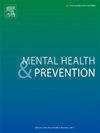Exploring suicide in Greenland - A scoping review of the literature
IF 2.4
Q2 Medicine
引用次数: 0
Abstract
Background
Suicide is a global public health challenge. High rates are particularly pronounced among Indigenous populations. There is a lack of in-depth knowledge about suicide in Greenland, which is needed to develop relevant suicide prevention and treatment initiatives.
Aim
Aim was to review existing published peer-reviewed and grey literature on suicide in Greenland to inform future policies, research, and interventions.
Methods
A scoping review methodology was applied, following the PRISMA-ScR standard. Searches were made in six databases and through hand-searches for literature published in Danish or English. The Social Ecological Model was used to structure the thematic analysis.
Results
The search yielded 277 sources, with 43 included in the study. While descriptive, quantitative methods were predominant, only two studies used a strict qualitative approach. No studies reported on controlled trials. Following the Social Ecological Model, most articles addressed suicide at the individual level, societal- and relationship levels, whereas the community level was rarely addressed. Most sources reiterated risk factors related to suicide especially within the themes: gender at birth, age, alcohol, sexual abuse, societal transitions, and geographical inequalities. Few sources evaluated previous interventions and explored preventive factors. Little attention was paid to the media's role in suicide prevention.
Conclusions
Findings showed that research has primarily been descriptive, suggesting that qualitative methods would be relevant for future research. An investigation of protective factors and the role and opportunities of the media and social media would be relevant. A limited number of studies applied trial designs, suggesting lack of evidence-based treatment and prevention.
探索自杀在格陵兰岛-范围审查的文献
自杀是一项全球公共卫生挑战。在土著居民中发病率特别高。格陵兰缺乏对自杀的深入了解,这是制定相关自杀预防和治疗举措所需要的。目的是回顾现有发表的同行评议的关于格陵兰自杀的灰色文献,为未来的政策、研究和干预提供信息。方法按照PRISMA-ScR标准,采用范围审查方法。在六个数据库中进行了搜索,并通过手工搜索以丹麦语或英语出版的文献。运用社会生态模型构建专题分析。结果搜索产生了277个来源,其中43个被纳入了研究。虽然描述性和定量方法占主导地位,但只有两项研究使用了严格的定性方法。没有对照试验的研究报告。根据社会生态模型,大多数文章从个人层面、社会和关系层面讨论自杀问题,而很少涉及社区层面。大多数资料来源重申了与自杀有关的风险因素,特别是在以下主题中:出生性别、年龄、酒精、性虐待、社会转型和地域不平等。很少有资料评价以前的干预措施并探讨预防因素。很少有人注意到媒体在预防自杀方面的作用。研究结果表明,研究主要是描述性的,这表明定性方法将与未来的研究相关。对保护因素以及媒体和社会媒体的作用和机会进行调查将是相关的。有限数量的研究采用试验设计,表明缺乏循证治疗和预防。
本文章由计算机程序翻译,如有差异,请以英文原文为准。
求助全文
约1分钟内获得全文
求助全文
来源期刊

Mental Health and Prevention
Medicine-Psychiatry and Mental Health
CiteScore
2.10
自引率
0.00%
发文量
22
审稿时长
24 days
 求助内容:
求助内容: 应助结果提醒方式:
应助结果提醒方式:


